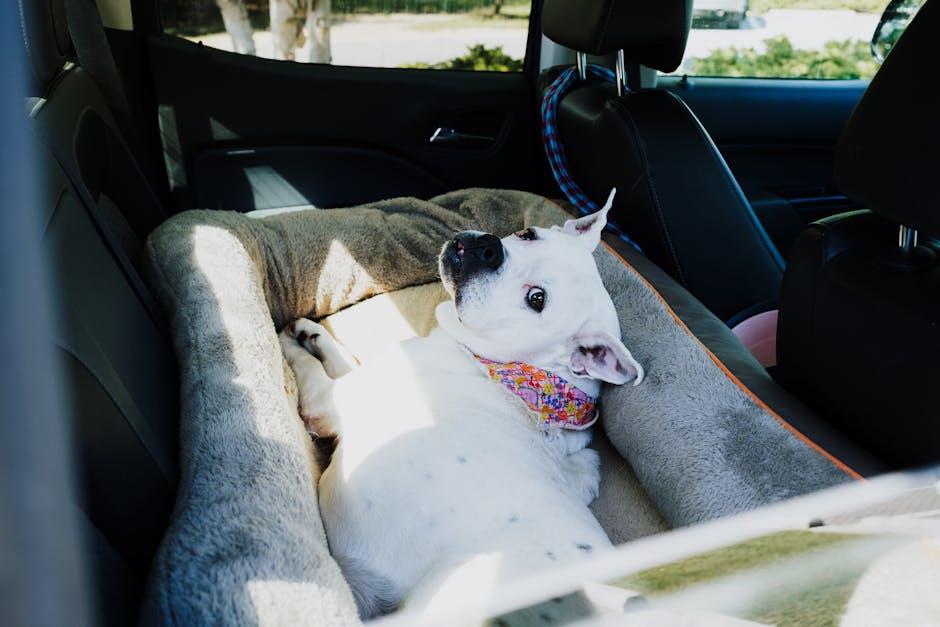Losing a beloved pet is every dog owner’s worst nightmare. The thought of your furry friend wandering alone and frightened is heart-wrenching, but with some proactive steps, you can significantly reduce the risk of this happening. In this article, we will guide you through practical and effective strategies to ensure your dog stays safe and sound by your side. From understanding your pet’s behavior to implementing safety measures at home and during outings, these tips will help you create a secure environment for your canine companion. Let’s embark on this journey together to keep your four-legged family member safe, happy, and right where they belong—by your side.
Understanding Your Dogs Behavior and Instincts
To ensure your furry companion stays safe and sound, it’s crucial to delve into the world of canine behavior and instincts. Dogs are naturally curious and adventurous creatures, driven by instincts that date back to their wild ancestors. Understanding these instincts can help you prevent them from wandering off. Scent marking, for example, is a common behavior where dogs use their keen sense of smell to explore and communicate with their environment. This means that a fascinating scent trail could easily lure them away from home.
- Territorial Instincts: Dogs often patrol and mark their territory. Ensure your yard is secure to prevent them from expanding their perceived boundaries.
- Prey Drive: Dogs with a strong prey drive might chase after small animals. Engage them with toys and activities that satisfy this instinct safely.
- Social Instincts: Social creatures by nature, dogs may wander off in search of other animals or people. Regular playdates or visits to dog parks can fulfill this need.
By understanding and addressing these instincts, you can create an environment that keeps your dog engaged and content, reducing the chances of them straying too far from home. Consistent training and positive reinforcement are key in ensuring your dog listens and stays close, even when their instincts kick in.
Creating a Safe and Secure Environment at Home
Ensuring your furry friend stays safe within the confines of your home involves a combination of preventive measures and awareness. Start by securing your yard: check for any gaps in fences or gates that might tempt an adventurous pup to explore the neighborhood. Install self-closing gates and consider adding an additional layer of protection with pet-friendly fencing. Indoors, make sure that windows and doors are properly closed or screened, especially if you have a curious dog who likes to watch the world go by.
Identification is key in case your dog does wander off. Equip your pet with a collar that includes a tag with your contact information. Consider microchipping as a permanent form of ID, which can be invaluable in helping your dog return home if they ever get lost. Additionally, teach your dog basic commands such as “stay” and “come,” which can be lifesavers in preventing your pet from bolting at the sight of an open door. By being proactive and creating a secure environment, you can significantly reduce the chances of your beloved pet getting lost.
- Check fences and gates for escape routes.
- Use pet-friendly fencing for added security.
- Ensure windows and doors are securely closed.
- Equip your dog with an ID collar and consider microchipping.
- Train your dog with basic commands like “stay” and “come.”

Training Techniques to Strengthen Recall and Obedience
Building a strong recall and enhancing your dog’s obedience are crucial steps in ensuring their safety. Start by establishing a consistent training routine that includes positive reinforcement. Reward your dog with treats, praise, or playtime whenever they respond to your call. Consistency is key, so practice in various environments, gradually increasing distractions to test their response.
- Use a long lead: This gives your dog a sense of freedom while allowing you to maintain control. It’s an excellent tool for practicing recall in open spaces.
- Incorporate games: Engage in fun activities like hide and seek or fetch, which naturally encourage your dog to return to you.
- Teach a reliable recall word: Choose a specific word or phrase that you consistently use for recall, ensuring it stands out from everyday commands.
To further reinforce obedience, consider enrolling in a training class. These classes not only provide structured learning but also expose your dog to social situations, improving their ability to focus on your commands amidst distractions. Remember, patience and persistence are your allies in building a reliable recall, making it less likely for your furry friend to wander off.

Utilizing Technology and Tools to Keep Track of Your Furry Friend
In today’s digital age, leveraging technology can significantly enhance your ability to monitor and safeguard your beloved canine companion. From GPS trackers to smart collars, these tools offer peace of mind by ensuring you always know your dog’s whereabouts. GPS trackers attach to your dog’s collar and provide real-time location updates through a smartphone app. This not only helps in locating your pet if they wander off but also allows you to set up safe zones. Should your dog stray beyond these boundaries, you’ll receive an instant alert, prompting swift action.
For those who prefer a more integrated approach, smart collars combine GPS tracking with additional features like activity monitoring and health tracking. These collars can give insights into your dog’s daily exercise levels, helping you ensure they remain healthy and active. Here are some key benefits of utilizing these technologies:
- Real-time location tracking: Instant updates on your dog’s location.
- Virtual safe zones: Alerts when your pet leaves designated areas.
- Activity and health monitoring: Track your dog’s exercise and well-being.
- Peace of mind: Knowing your furry friend is safe and sound.
By embracing these modern tools, you can create a safer environment for your dog, ensuring they remain close and cherished members of your family.

